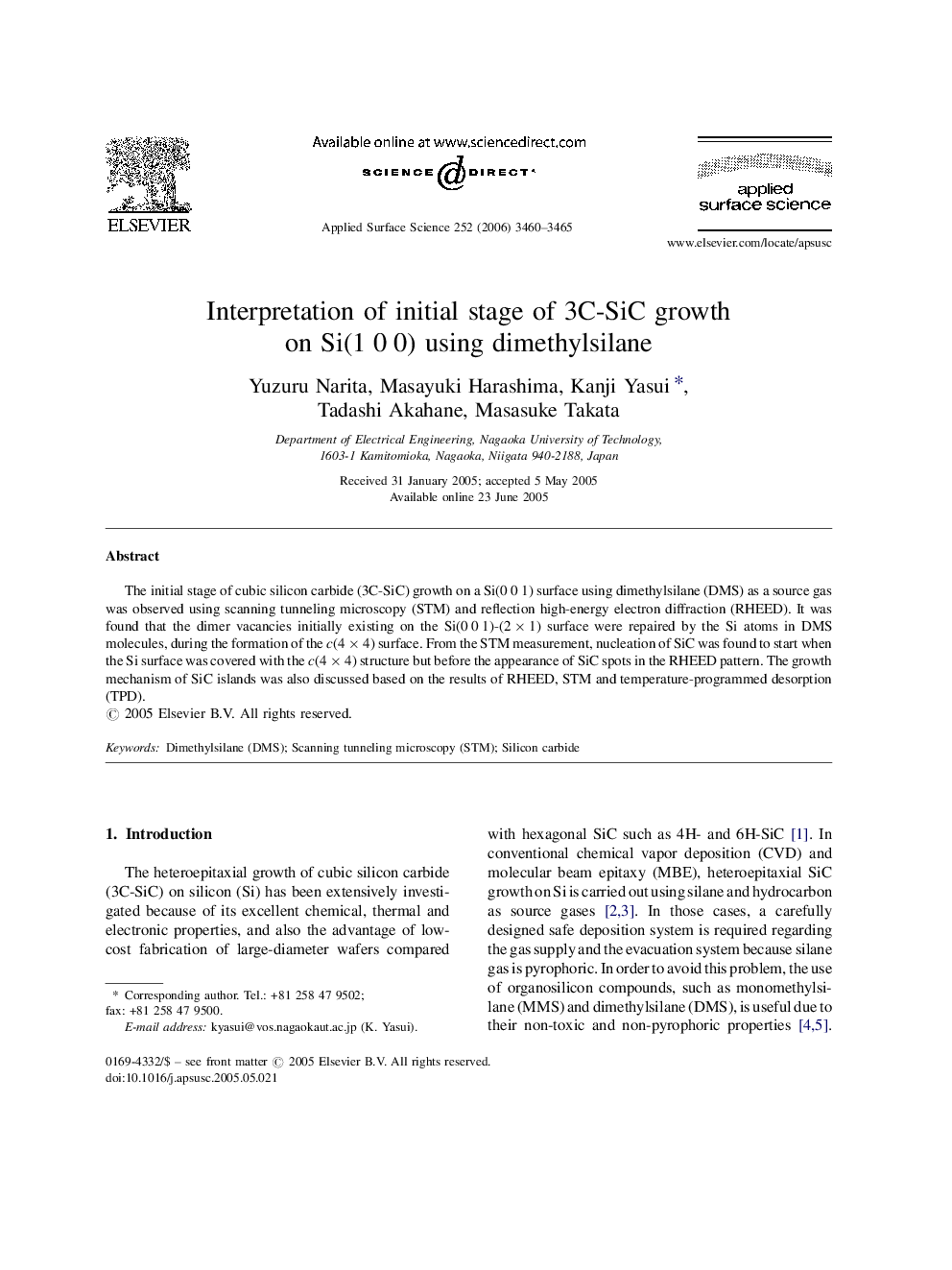| Article ID | Journal | Published Year | Pages | File Type |
|---|---|---|---|---|
| 5366638 | Applied Surface Science | 2006 | 6 Pages |
The initial stage of cubic silicon carbide (3C-SiC) growth on a Si(0Â 0Â 1) surface using dimethylsilane (DMS) as a source gas was observed using scanning tunneling microscopy (STM) and reflection high-energy electron diffraction (RHEED). It was found that the dimer vacancies initially existing on the Si(0Â 0Â 1)-(2Â ÃÂ 1) surface were repaired by the Si atoms in DMS molecules, during the formation of the c(4Â ÃÂ 4) surface. From the STM measurement, nucleation of SiC was found to start when the Si surface was covered with the c(4Â ÃÂ 4) structure but before the appearance of SiC spots in the RHEED pattern. The growth mechanism of SiC islands was also discussed based on the results of RHEED, STM and temperature-programmed desorption (TPD).
